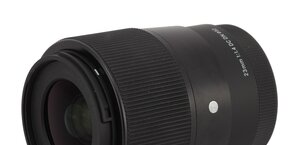Sigma C 28-70 mm f/2.8 DG DN
10. Autofocus and focus breathing
Autofocus
The autofocus test of the Sigma C 28-70 mm f/2.8 DG DN was based on the Sony A7R IIIa and the Sony A7R V cameras. In both cases the mechanism worked noiselessly and was very quick. Running through the whole distance range and confirming the focus takes here 0.4-0.5 of a second and this value is slightly shorter at 28 mm and slightly longer at 70 mm.These differences are not especially meaningful, though. It is interesting that the autofocus could have been even faster – as it is, no matter from what point of the scale you start, the first move of the system is almost always in the wrong direction. The autofocus corrects it immediately, though, and returns to the right position.As it is characteristic for many Sigma instruments, switching from AF-S to AF-C improves the work culture of the autofocus mechanism. In this case there are no wrong moves, the operation often lasts no longer than 0.2-0.3 of a second. These are values worth a high quality journalistic lens.
When it comes to the accuracy of the autofocus we didn't notice any problems either. The lens fared very well both in studio and outside, no matter to what body, used in the test, it was attached. The number of misses didn't exceed here 2-3%, a very good result.
Please Support UsIf you enjoy our reviews and articles, and you want us to continue our work please, support our website by donating through PayPal. The funds are going to be used for paying our editorial team, renting servers, and equipping our testing studio; only that way we will be able to continue providing you interesting content for free. |
- - - - - - - - - - - - - - - - - - - - - - - - - - - - - - - - - - - - - - - - - - - - - - - -
The lens didn't have any distinct front or back focus tendency.
| A7R IIIa, 50 mm, f/2.8 |
 |
| A7R IIIa, 70 mm, f/2.8 |
 |
| A7R V, 50 mm, f/2.8 |
 |
| A7R V, 70 mm, f/2.8 |
 |
Focus breathing
Focus breathing tests show reframing images as you oversharp them. We conduct the test by manually passing from the minimum focusing distance to infinity with the aperture stopped down; then we check how the field of view of the lens changed as a result.A frame change ranging from 0 to 5% we consider to be low. Between 5 and 10% you can speak about medium levels. Usually such values constitute also the maximum efficiency level of any breathing compensation algorithms, present in some bodies. Between 10 and 15% focus breathing is high, above 15% its level can be called very high.
Below we show you the test video of the tested Sigma lens:






